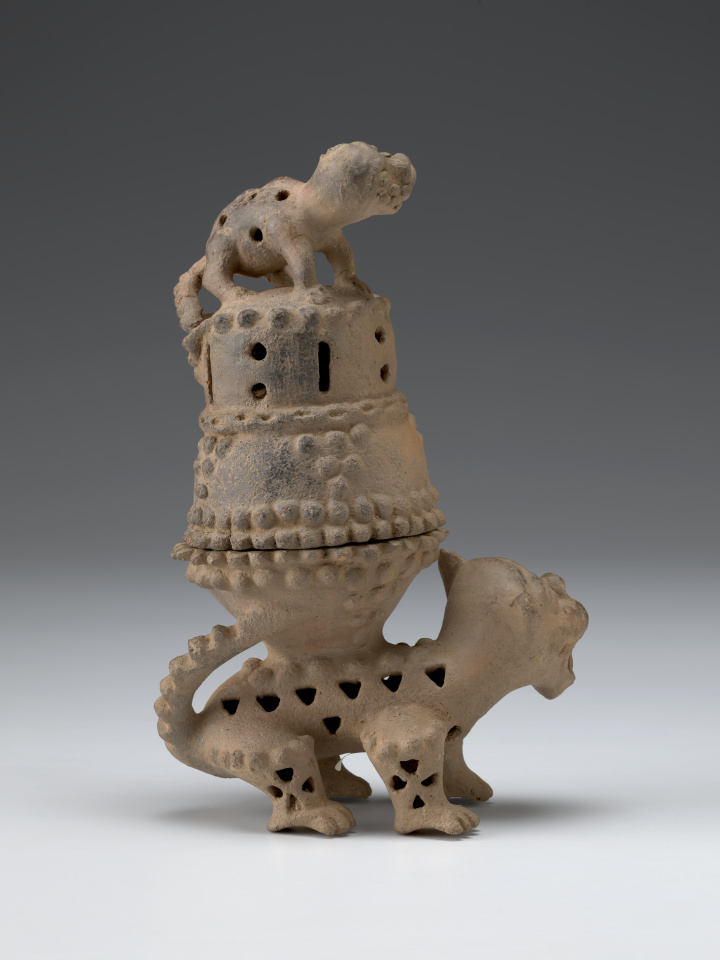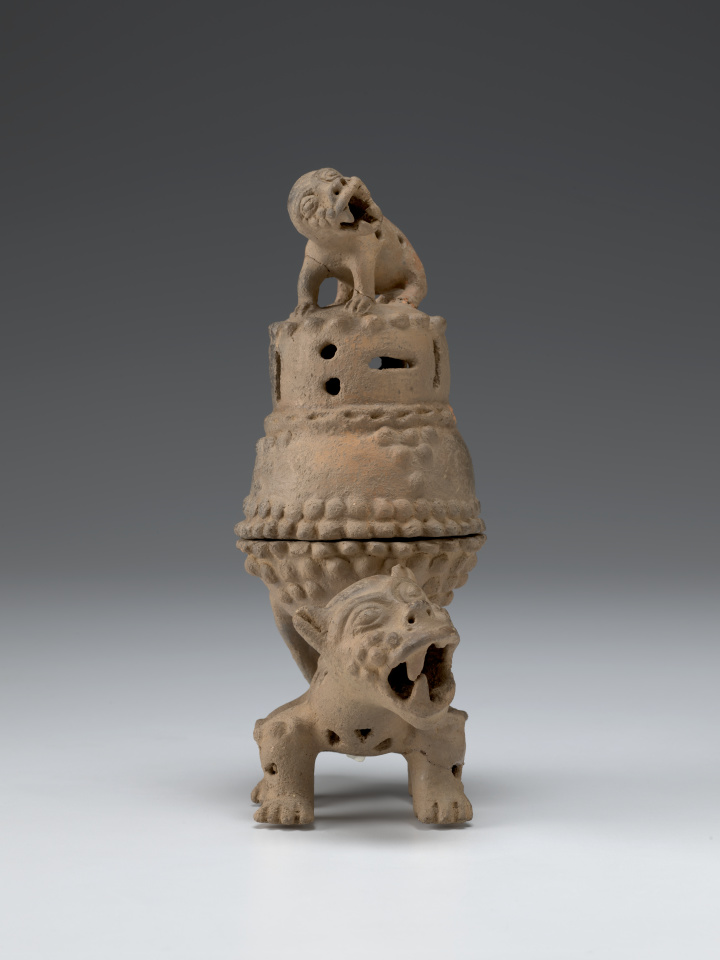Jaguar Effigy Incense Burner (work of art)
Artwork Info
Key Ideas
- Ancient Central American healers used special tools, such as this incense burner, to communicate with supernatural beings.
- The spiritual beliefs of the ancient peoples of southern Central America are not completely understood, but it is clear from their art that certain animals were considered to possess great power. Like the eagle of the sky and the crocodile in water, the jaguar was the most powerful creature of its habitat, the forest.
- Ancient Central Americans performed ritual ceremonies with effigies, ceramic images of the most powerful animals.
Learn More
This animal-form, or zoomorphic, incense burner consists of two separate pieces: a base and a lid. The small round spots on both feline figures indicate that the animals are most likely jaguars. The piece is delicately molded out of clay, and it is hollow inside. It shows signs of wear and use, with some chips in and burn marks on the surface. The larger animal forms the base of this object, and the smaller animal balances on top of the lid. Both animals are roaring.
Zoomorphic incense burners such as this one were important tools that were used in ancient healing practices. The smoke from the incense was used to communicate with supernatural beings and ask them for help. During the healing ceremonies, places, sick people, and other participants were covered with the incense smoke, which was believed to get rid of negative influences. The bowl of the incense burner would have contained burning coal, and objects such as plants, minerals, and animals may have been placed over it. The smoke escaped through the openings in the lid and the animal on top of the lid, creating a multisensory experience for the people attending the ceremony. Both of the animal figures, probably jaguars, were symbols of royalty and represented the most powerful predator on land in ancient America.
tags: repetition, pattern, environment, function, ceremony
Additional Resources
Resources for Teachers
- View an effigy incense burner from The Metropolitan Museum of Art and compare it to the Jaguar Effigy Incense Burner.
- Read about copal, an incense derived from tree sap in Maya and Aztec culture.
Resources for Students
- Learn more about the role of jaguars in ancient American culture.




